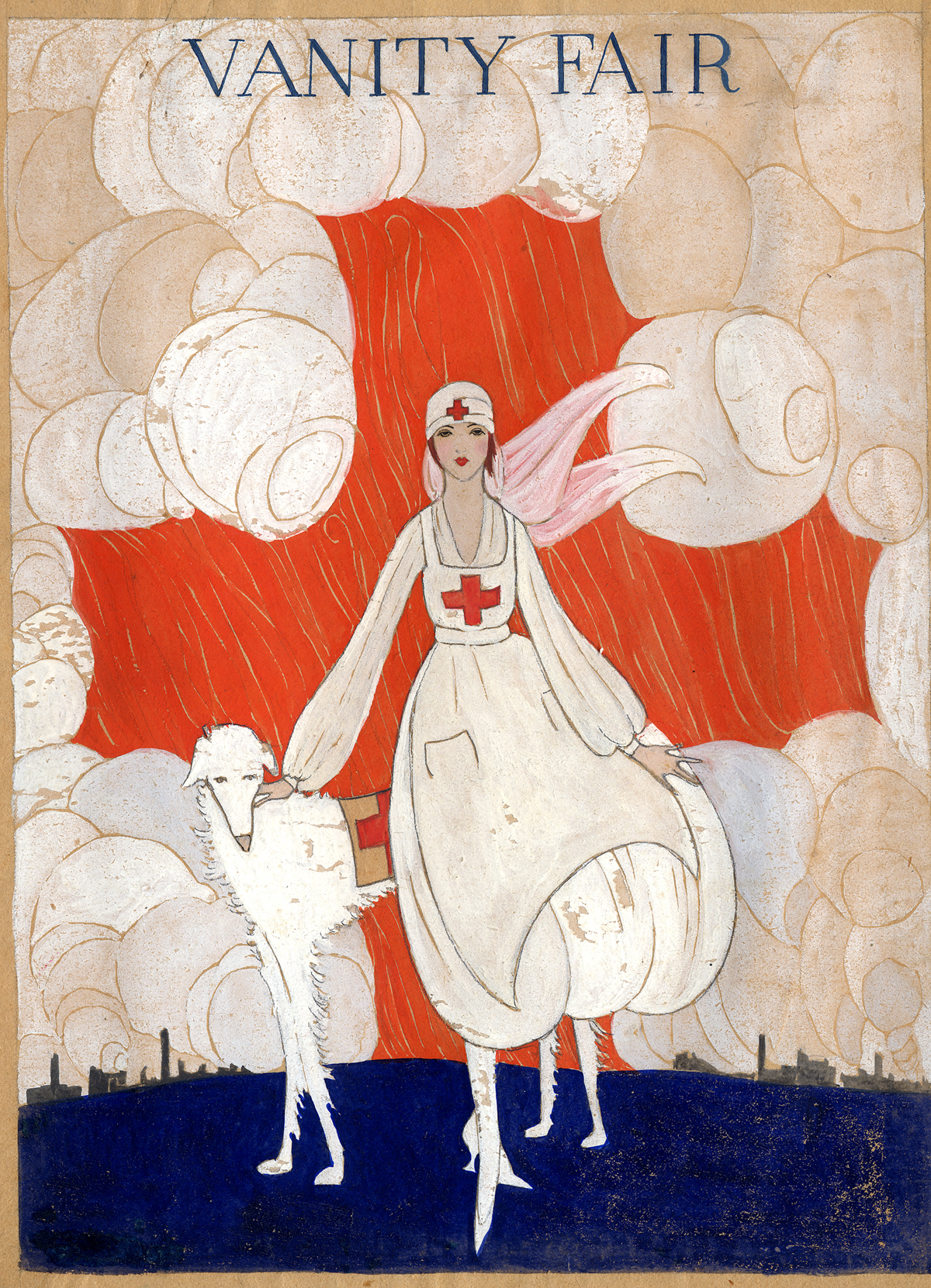
World War I played a crucial part in the transformation of gender roles. As men left for the battlefields, women took on traditionally male occupations at home. Buoyed by this experience and a new sense of confidence, these women started demanding more rights and independence.
These shifting roles were mirrored by new fashions, such as the flapper attire, which was ushered in by the rebellion of the post-war Jazz Age. Style magazines like Vanity Fair captured these trends on its covers.
Gordon Conway, a Texas-born fashion designer and illustrator, was famous for her drawings of these sophisticated and independent “New Women.” Conway launched her career at Vogue and Vanity Fair, and she was so talented that she was soon working for other publications, as well as a host of different advertising clients. Throughout her career, she did costume design, magazine art, and poster art for film, cabaret, and theater, working in New York, London, and Paris. She was remarkable not only for her artistic talent, but also for her ability to influence women’s desires for more cultural, sexual, and legal freedoms.
A Conway cover illustration for Vanity Fair is currently on display in the Ransom Center’s exhibition The World at War, 1914-1918. The illustration features a stylish, svelte nurse with an Afghan hound. Although the illustration was rejected for publication, it was later used by the Red Cross as a recruitment poster.
The Ransom Center’s Conway collection includes original art; photographs of family, friends and productions; and diaries, costumes, personal effects, datebooks, and numerous scrapbooks.
The World at War, 1914-1918 runs through August 3, 2014.
Image: Gordon Conway “Red Cross Girl” illustration for Vanity Fair, 1918.